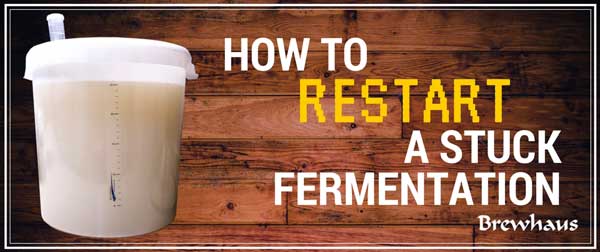How To Restart a Stuck Fermentation

There are a lot of reasons why your fermentation can start normally and then get “stuck,” regardless if you’re making moonshine, wine, beer, or other spirits. Here are a few suggestions from Rick on why this can happen and how to solve the problem.
Your wash isn’t the right temperature.
One issue people have with fermenting when they’re making moonshine is their wash being too cold. It’s especially common when people ferment in their basement or garage during cooler months. It’s also easy to assume that most yeasts require the same temperature to ferment, but that’s simply not true. Make sure that you read the fermenting temperatures that are printed on the yeast that you’re using. I’ve pasted a quick reference guide for some of the yeasts often used for making moonshine that we sell below:
- High Spirits Turbo 48 Turbo Yeast: 86-100°F
- High Spirits Turbo 24 Turbo Yeast: 86-100°F
- Prestige 8kg Turbo Yeast: 75-80°F
- Prestige Turbo Pure 48 Turbo Yeast: 68-86°F
- Prestige Black Label Turbo Yeast: 68-86°F
- Prestige Batch Yeast: 68-83°F
- Black Bull Turbo Distillers Yeast: 68-82°F
This issue is pretty easy to solve by just increasing the temperature, and you have a few ways to do that. One way is to use a heating element such as a Brew Belt or FermHeater. You can also try the following DIY tips:
- • Start your fermentation near 100° and wrap your container in a small blanket or towel to keep that heat in there.
- If you’re fermenting on a cold ground such as stone or concrete, so elevate it by using some 2x4s with blankets to insulate it.
On the other hand, your wash can become too hot, which will damage or even kill the yeast. If specific gravity is high (very little fermentation has taken place) you can try adding more yeast, but there’s a chance you’ll have to give up on it and start over. It’s important to keep an eye on the temperature throughout fermenting.
There’s too much sugar for the yeast strain you’re using.
The reason why you use sugar in a mash is basically because your yeast consumes the sugar, converting it into alcohol. So it’s easy to assume that more sugar = more alcohol. However, too much sugar in your mash can actually hinder your yeast’s ability to make alcohol, and most people want to get as high an alcohol content as possible when making moonshine. This is where hydrometer readings are handy, because helps you determine how much sugar is already in the mash and how much sugar you need to add in order to get the potential alcohol level you're looking for. If you do wind up with more sugar than needed, simply add more water in order to reduce the sugar concentration.
There’s not enough nutrients in your yeast.
Finally, your mash might not have enough nutrients to perform its best. Most turbo yeasts already contain the proper ingredients optimal for that particular yeast strain. However, if you are using baker’s yeast or a basic distiller’s yeast for making moonshine, you may still need to add some distiller’s nutrients to really get it going.
I hope this information helps you out when you get stuck fermenting! If you have any additional questions, you can always contact us or message us through Facebook.








Comments